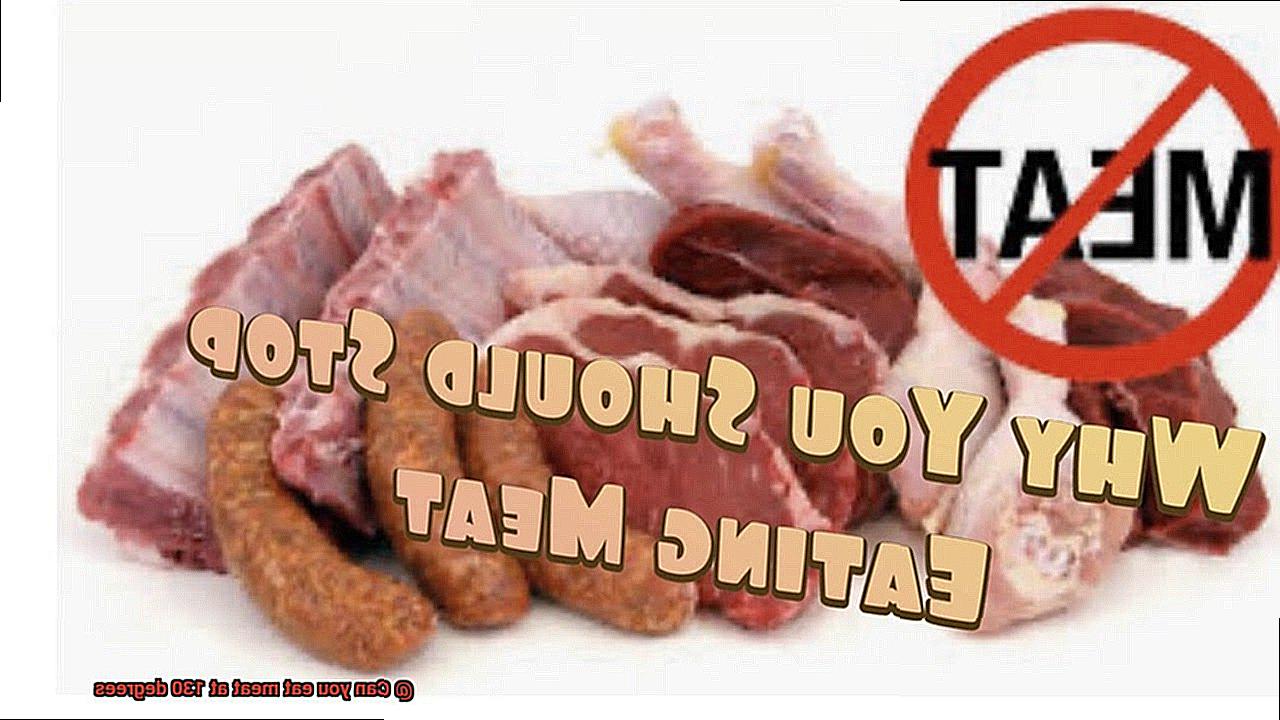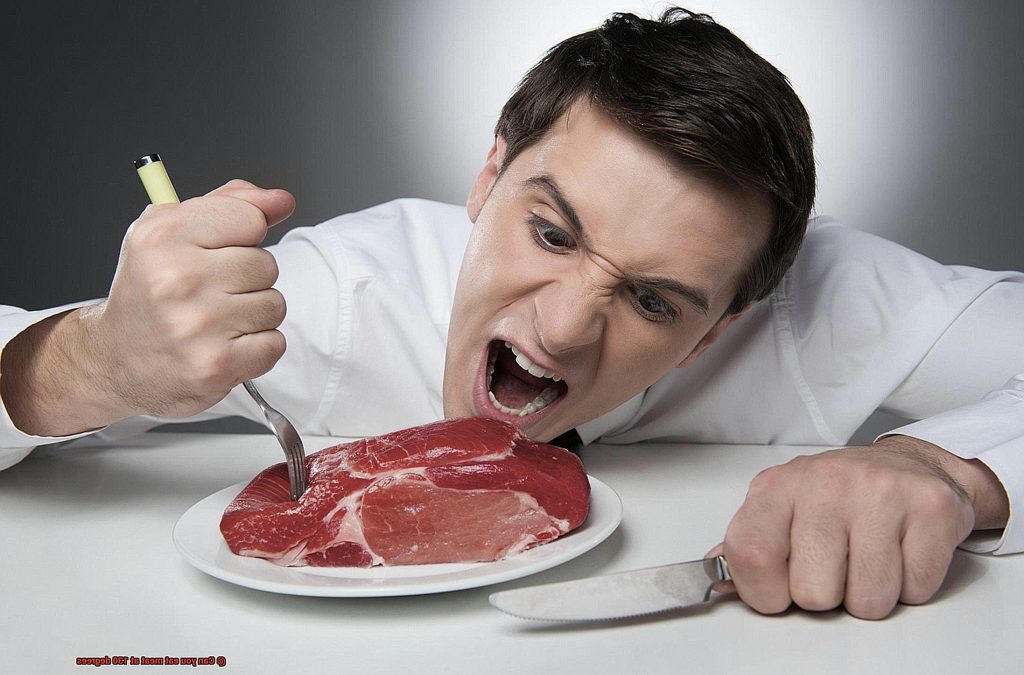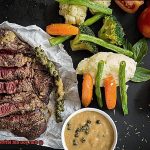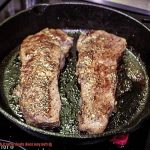Hey there, food enthusiasts and grill masters. Do you live for that perfect medium-rare steak, with its succulent pink center? We all know the drill – cook meat to a safe temperature. But here’s the burning question: can you sink your teeth into a juicy piece of meat at a mere 130 degrees Fahrenheit? Hold onto your spatula tight because we’re about to uncover the truth behind this fiery culinary debate.
When it comes to cooking meat, temperature is key. It’s the secret ingredient that determines taste, texture, and safety. We’re used to hearing that meat should reach an internal temperature of 165 degrees to keep those pesky bacteria away. But lately, there’s been chatter about exceptions for certain cuts of meat at lower temperatures – specifically, 130 degrees Fahrenheit.
In this captivating blog post, we’ll dive into the science of cooking meat and explore when it’s safe to devour it at 130 degrees Fahrenheit. We’ll unravel the factors that affect the safety of undercooked meat, the risks involved (if any), and which meats are more suitable for this lower cooking temperature.
Buckle up. Get ready for a culinary adventure where we’ll navigate food safety guidelines, relish in gastronomic pleasure, and explore the enticing world of meat cooking temperatures. By the end, you’ll have all the knowledge you need to savor your meals with confidence – finding that perfect balance between taste and safety. So grab your apron and let’s fire up that grill as we uncover the truth about eating meat at 130 degrees Fahrenheit.
Contents
Understanding the Recommended Minimum Internal Temperature for Consuming Cooked Meat
When it comes to enjoying a delicious and safe meal of cooked meat, understanding the recommended minimum internal temperature is crucial. The United States Department of Agriculture (USDA) provides guidelines that vary based on the type of meat and cooking method. Let’s explore these guidelines in detail and ensure we’re cooking our meat to perfection.
- Ground Meats: Ground meats, including beef, pork, veal, and lamb, must be cooked to an internal temperature of 160 degrees Fahrenheit (71 degrees Celsius). The grinding process increases the risk of bacterial contamination, making it essential to eliminate any harmful bacteria like E. coli or Salmonella.
- Whole Cuts: Whole cuts of meat, such as steaks, roasts, and chops, have a lower risk of bacterial contamination within the interior. For these cuts, the recommended minimum internal temperature is 145 degrees Fahrenheit (63 degrees Celsius). After reaching this temperature, allow the meat to rest for three minutes before carving or consuming. This rest time ensures that any remaining bacteria are destroyed by the heat.
- Poultry: Poultry, including chicken and turkey, requires special attention due to the presence of harmful bacteria like Salmonella and Campylobacter. To eliminate these risks, cook poultry to a minimum internal temperature of 165 degrees Fahrenheit (74 degrees Celsius). This ensures that every bite is safe and free from any potential foodborne illness.
- Pork: Pork, such as chops and roasts, should be cooked to a minimum internal temperature of 145 degrees Fahrenheit (63 degrees Celsius), just like other whole cuts. However, it’s important to note that a three-minute rest time should follow before carving or consuming. This allows for optimal flavor and juiciness.
- Fish and Shellfish: Fish and shellfish should be cooked until they reach an internal temperature of 145 degrees Fahrenheit (63 degrees Celsius) or until they become opaque and easily flake with a fork. This ensures that they are fully cooked and safe to consume.
It’s important to remember that these recommended minimum internal temperatures guarantee the safety of the meat by eliminating harmful bacteria. However, personal taste preferences or cultural reasons may lead individuals to cook their meat to higher temperatures. Just be aware that doing so can result in a drier and less tender texture.
Ground Meat: The Risk of Bacterial Contamination
Imagine yourself at a backyard barbecue, tantalized by the irresistible scent of sizzling burgers. But did you know that beneath their mouthwatering facade lies a lurking danger? Ground meat, whether it’s beef or turkey, carries a higher risk of bacterial contamination compared to whole cuts of meat. In this captivating exploration, we will delve into the perils of ground meat and emphasize the crucial need for thorough cooking. So, fasten your apron and let’s embark on a culinary journey that guarantees both taste and safety.
The Hazards of Grinding:
When it comes to ground meat, we must confront the undeniable truth: bacterial contamination is an ever-present threat. During the grinding process, any bacteria clinging to the meat’s surface can infiltrate the entire batch. A single contaminated piece has the potential to taint an entire mound of ground beef or turkey. It’s a chilling thought indeed.
Enter E. coli – The Unwanted Intruder:
Among the unwelcome guests in ground meat, Escherichia coli (E. coli) steals the spotlight. This pesky bacterium, commonly found in animal intestines, wreaks havoc when ingested. It stealthily infiltrates our beloved burgers during butchering, causing severe food poisoning. But fear not – there’s a way to defeat this villain.
The Battle Plan: Thorough Cooking:
To ensure our ground meat is safe for consumption, we must unleash the power of heat. Cooking ground meat thoroughly becomes our secret weapon against bacterial contamination. The USDA sets the bar at an internal temperature of 160 degrees Fahrenheit (71 degrees Celsius), which annihilates any lurking pathogens.
Why Temperature Matters:
You may wonder why lower cooking temperatures don’t suffice. Here’s the unvarnished truth: at 130 degrees Fahrenheit (54 degrees Celsius), some bacteria might survive, heightening the risk of foodborne illness. While some argue for a medium-rare burger for its taste, it’s imperative to comprehend the potential dangers at play. Cooking ground meat to a higher internal temperature reduces the risk of bacterial contamination and ensures the safety of our cherished food.
Whole Cuts of Meat: Lower Risk of Bacterial Contamination
In our previous segment, we delved into the world of ground meat and the importance of cooking it to higher internal temperatures to fend off those pesky E. coli bacteria. But what about those succulent steaks, mouthwatering roasts, and delectable whole chickens that grace our dinner tables? Fear not, as today we will explore the realm of whole cuts of meat and how to enjoy them while minimizing the risk of bacterial contamination. So, don your aprons and embark on this culinary adventure with us.
The Marvels of Whole Cuts:
Prepare to be amazed by the wonders of whole cuts. These unprocessed pieces, be it juicy steaks, tender roasts, or whole chickens ready for roasting, boast a lower risk of bacterial contamination. The magic lies in their interiors, generally sterile, while any potential bacteria reside on the exterior.
Hitting the Bullseye: Safe Internal Temperatures:
To ensure a safe culinary adventure and annihilate any lurking bacteria, mastering the art of hitting the right internal temperatures is crucial. Let’s break it down:
- Steaks and roasts: Aim for a minimum internal temperature of 145 degrees Fahrenheit. That’s where the magic happens.
- Calling all poultry lovers: Raise the bar to a minimum internal temperature of 165 degrees Fahrenheit for chicken and turkey. Safety first.
The Heat Shield: Cooking Temperatures:
Embrace the power of heat. Cooking meat at temperatures above 130 degrees Fahrenheit significantly reduces the risk of foodborne illnesses caused by malevolent bacteria like Salmonella and E. coli. Remember, these sneaky critters hitch a ride on raw meat surfaces and can wreak havoc if consumed. Say no to undercooked meat.
Trust Your Thermometer:
In the battle against bacterial contamination, a food thermometer becomes your trusty sidekick. Bid farewell to guesswork; rely on your thermometer to ensure your meat reaches those recommended internal temperatures. It’s the secret weapon to safeguard against unwanted bacteria.
Cooking Beyond the Recommended Minimum Internal Temperature
In our previous expedition, we traversed the realm of cooking meat to the recommended minimum internal temperature for utmost safety. But today, we’re embarking on a daring expedition into uncharted territory – cooking beyond those guidelines. So don your aprons, sharpen your knives, and brace yourselves for a culinary adventure like no other.
The Allure of Lower Temperatures:
Imagine this: a tantalizing steak cooked to a perfect medium-rare, its rosy center bursting with succulence and tenderness. It’s no secret that many bon vivants prefer their meat cooked to lower temperatures, hovering around 130 degrees Fahrenheit. Whether it’s the sublime taste or the melt-in-your-mouth texture, there’s an undeniable allure to exploring the boundaries of cooking temperatures. But beware, for this path is not without its perils.
Unveiling the Dangers at 130 Degrees Fahrenheit:
While the prospect of a medium-rare masterpiece may be tempting, it’s crucial to acknowledge that such temperatures may not be sufficient to bid farewell to the nefarious bacteria and pathogens lurking within our meat. At 130 degrees Fahrenheit, the internal temperature might not reach the critical threshold needed to vanquish most bacteria, including the notorious troublemakers like salmonella and E.coli.
Temperature Diversity: A Symphony of Flavors:
Hold onto your spatulas. Remember that the recommended minimum internal temperature for different types of meat varies based on their composition and contamination risks. For beef steaks and roasts, aim for a minimum internal temperature of 145 degrees Fahrenheit, accompanied by a three-minute rest time. Pork dances along the same notes with its recommended minimum internal temperature. Poultry, being more susceptible to bacterial contamination, necessitates a minimum internal temperature of 165 degrees Fahrenheit.
Ground Meats: A Higher Stakes Game:

Let’s not forget about ground meats – those delectable orbs of flavor that grace our tables. Due to their larger surface area, ground meats pose a higher risk of contamination by potential pathogens. To ensure safety, it is advised to cook ground meats to a higher internal temperature of 160 degrees Fahrenheit.
Is It Safe to Eat Meat at 130 Degrees Fahrenheit?
Ah, the thrill of culinary exploration. The idea of cooking meat to a tantalizing temperature of 130 degrees Fahrenheit may make your taste buds dance with excitement. But before we embark on this daring adventure, let’s take a moment to consider the potential risks associated with consuming meat that is not cooked to the recommended minimum internal temperatures.
When it comes to food safety, undercooked meat can be a breeding ground for harmful bacteria like salmonella or E. coli. These sneaky pathogens can cause foodborne illnesses that leave us feeling far from adventurous. So, it’s essential to tread carefully through this uncharted territory.
Enter the United States Department of Agriculture (USDA), with their guidelines that serve as a compass in our culinary journey. For ground meats like beef, pork, veal, and lamb, they recommend cooking them to a minimum internal temperature of 160 degrees Fahrenheit. This ensures that any lurking bacteria are obliterated, keeping us safe from potential harm. And for other cuts of meat, such as steaks, roasts, and fish, the magic number is 145 degrees Fahrenheit.
But here’s where things get interesting – the concept of “carryover cooking.” Picture this: you remove your perfectly seared steak from the heat source, only to find that its internal temperature continues to rise. It’s like the meat has a secret agenda to reach its own perfect moment of doneness. This means that if you cook your meat to a slightly lower temperature than the recommended guidelines, it can still reach a safe temperature during this resting period.
Now, let’s dive deeper into the world of culinary innovation with the sous vide cooking method. It’s like strapping your meat into a time capsule and letting it slowly cook in a controlled water bath. With sous vide, you can achieve succulent results at lower temperatures while ensuring safety because the meat remains in a cozy, precise environment for an extended period.
While some culinary daredevils may argue that eating meat at lower temperatures is a matter of personal preference, we must not forget about the vulnerable populations among us. Pregnant women, young children, older adults, and individuals with weakened immune systems are more susceptible to foodborne illnesses. For them, following the recommended cooking temperatures becomes even more crucial to minimize their risk.
The Risks of Eating Rare or Medium-Rare Meat
While this culinary indulgence may tantalize your taste buds, it’s crucial to understand the potential risks that come with undercooked meat. In this captivating exploration, we’ll delve into the lurking dangers of consuming rare or medium-rare meat, including the unwelcome presence of harmful bacteria and parasites. So, prepare yourself for a sizzling journey through the hazards that lie beneath the surface of your favorite cuts.
Bacteria: Uninvited Intruders
When it comes to undercooked meat, bacteria like Salmonella, E. coli, and Campylobacter are the gatecrashers you’d want to keep at bay. These microscopic troublemakers can wreak havoc on your digestive system, unleashing a storm of nausea, vomiting, diarrhea, and abdominal pain. Safeguarding your health requires cooking meat to a safe internal temperature (145°F or 63°C for beef, pork, veal, and lamb), effectively eliminating these unwelcome guests and ensuring a safe gastronomic experience.
Ground Meats: Handle with Care
Ground meats demand special vigilance when it comes to cooking temperatures. The grinding process can scatter bacteria throughout the meat, making it imperative to thoroughly cook ground meats. Opting for fully cooked ground meats is generally a safer choice than risking the perils of rare or medium-rare.
Parasites: Hidden Threats
Aside from bacteria, another unwelcome visitor can lurk within undercooked pork: parasites. Trichinella spiralis is a parasite that instigates trichinellosis, a parasitic infection characterized by muscle pain, fever, and swelling around the eyes. Ensuring that pork is cooked to an internal temperature of 145°F (63°C) effectively eradicates these parasites, guaranteeing the safety of your pork-based culinary creations.
Balancing Safety and Savory Delights
While cooking meat to higher temperatures eliminates the risks of bacteria and parasites, it can also compromise tenderness and moisture. For those who relish the taste and texture of rare or medium-rare meat, it’s crucial to source your cuts from reputable suppliers and handle and store them with utmost care to mitigate the risk of contamination. By taking these precautions, you can savor your favorite meats without compromising your well-being.
Exceptions to the General Guideline
Exploring the Fascinating Exceptions to the General Guideline of Meat Cooking
Welcome back, fellow food enthusiasts. In our previous culinary adventure, we delved into the importance of cooking meat to safe temperatures to ward off those pesky bacteria and parasites. But as with any rule, there are exceptions. Today, we’re going to explore some intriguing exceptions to the general guideline for cooking meat. So put on your chef hats and let’s dive right in.
Exception 1: Sous Vide – The Science of Precise Cooking
Enter the world of sous vide, a cooking technique that takes precision to a whole new level. With sous vide, food is sealed in a bag and cooked in a water bath at a controlled temperature. This method allows for precise cooking, even at lower temperatures.
Exception 2: Cured and Smoked Meats – A Flair of Preservation
Now let’s talk about the magic of cured and smoked meats. These culinary delights have undergone a preservation process involving curing with salt and sometimes nitrates or nitrites, followed by smoking with low heat. This process inhibits bacterial growth and extends the shelf life of the meat.
What does this mean for us meat lovers? It means that certain cured or smoked meats can be savored without further cooking. Take prosciutto or country ham, for example. These mouthwatering hams have been cured and dried for an extended period, eliminating any potential bacteria. Similarly, smoked sausages or salamis are also often enjoyed without additional cooking because the smoking process helps preserve the meat.
But hold your apron strings. These exceptions don’t apply to all types of meats. Ground meats and poultry should still be cooked to the recommended internal temperatures for safety reasons. And remember, proper food handling practices are key to reducing the risk of foodborne illnesses.
hp4EheJNSOs” >
Conclusion
In conclusion, it is not safe to eat meat at a temperature of 130 degrees.
It’s crucial to ensure that meat reaches the recommended internal temperature to kill any harmful bacteria and ensure its safety for consumption.






